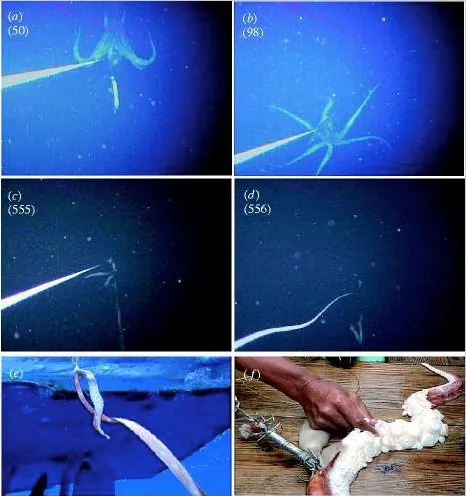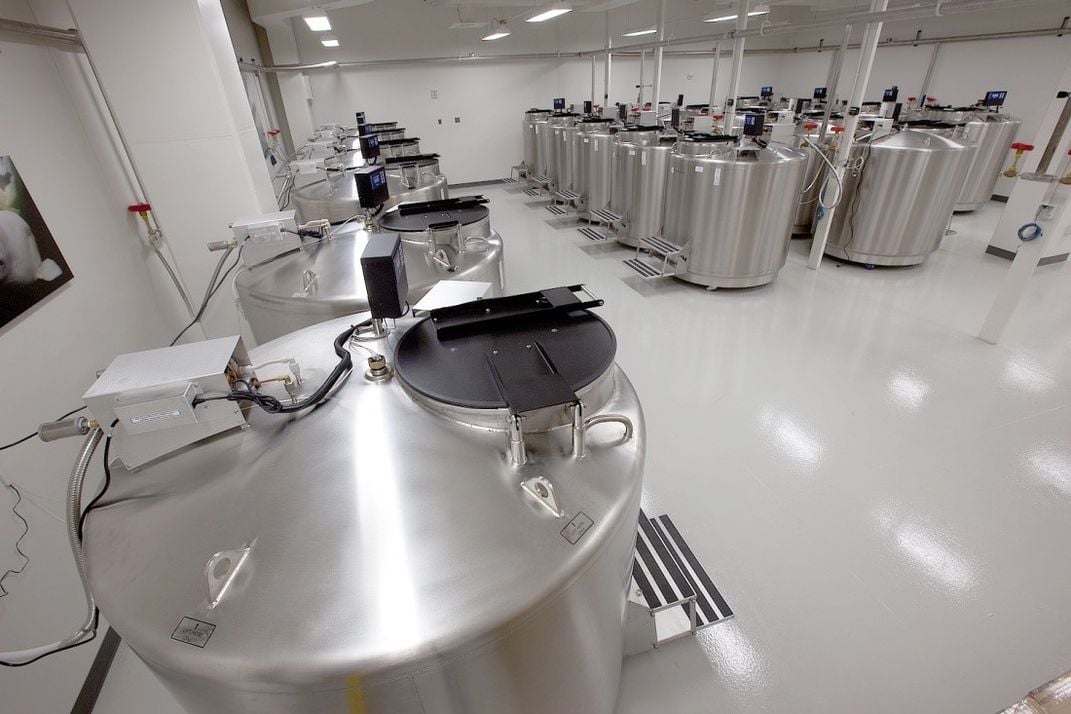NATIONAL MUSEUM OF NATURAL HISTORY
How Scientists Learn What Lives in the Deep Ocean
By collecting, storing and analyzing specimens and DNA from the deep sea, researchers are improving their knowledge about marine biodiversity in the deep ocean.
/https://tf-cmsv2-smithsonianmag-media.s3.amazonaws.com/blogging/featured/Preserved_giant_squid_on_display_at_the_Smithsonian..jpg)
In the fifteen years since it was first caught on camera, the giant squid has revealed many of its secrets. Researchers now know how it swims, some of its migration patterns and even how it might hunt. But they don't know a lot about the ocean depths where it lives.
“This was a way of opening people’s eyes to the deep sea and showing them that it’s a really alien environment and huge. We haven’t explored very much of it at all.” said Dr. Mike Vecchione, the curator of cephalopoda at the Smithsonian’s National Museum of Natural History and a researcher at the National Oceanic and Atmospheric Administration.
Over 60 percent of the ocean is deeper than 200 meters, making it hard to reach without expensive technology and a lot of funding. However, researchers like those who photographed the giant squid and like Vecchione, can still learn more about the hidden biodiversity in these remote ecosystems by studying deep-sea animals collected during scientific marine expeditions.
A one-two punch for species identification

To find and photograph the first living giant squid, researchers Dr. Tsunemi Kubodera and Dr. Kyoichi Mori used a fishing lure as bait. The squid attacked the lure, leaving behind one of its tentacles in the process. The scientists took that tentacle for DNA barcoding, which involves sequencing a unique part of an animal’s DNA, or "barcode" for the entire species. In this case, the DNA "barcode" confirmed that the big squid in the photos was indeed a giant squid, the species Architeuthis dux. They published both the photograph and the sequence on September 29, 2005.
“This was a way of opening people’s eyes to the deep sea and showing them that the deep sea is important, interesting and largely unexplored,” said Vecchione. While the photograph interested people in the deep-sea, DNA barcoding helped scientists know more about it.
"We can take any unknown species we find, whether it’s a part caught in a net or in the stomach of a dolphin, and still get a barcode sequence. It allows us to get a bigger picture of what lives in the deep ocean without seeing the whole animal," said Dr. Annie Lindgren, the Director for the Center for Life in Extreme Environments at Portland State University. She frequently works with Vecchione on ocean expeditions.
During scientific cruises, many samples aren’t in good condition. This makes it hard to study their morphology, or physical characteristics. DNA barcoding, like the type used on the giant squid, can supplement morphology and help species identification.
When he finds an unusual animal, Vecchione carefully examines its characteristics and Lindgren barcodes its DNA. The two-part process allows the researchers to tell if the animal is something that has been seen before or an entirely new species.
"It gives us a much broader perspective of where deep-sea animals are living, what they’re eating, what is eating them, and how they’re migrating,” said Lindgren.
A library for the deep sea

Barcoding is becoming as important a tool for species identification as morphology. And just like morphology, DNA barcodes need to be linked to physical specimens stored in collections. Barcoding also requires DNA databases, which can serve as "libraries" for future research.
The National Museum of Natural History’s biorepository is one of many international barcoding libraries that scientists are using to learn more about the world’s biodiversity. It works alongside the museum’s Global Genome Initiative — a project to capture and store DNA from at least half of the world’s biodiversity by 2022.
“It all boils down to having biorepositories and good data associated with those samples,” said Dr. Christopher Meyer, Curator of Mollusks at the museum. “We have the collections, and we track the reference libraries. It’s a really exciting time to be here and be using these tools and technologies to build our understanding of ocean science.”
By collecting, storing and analyzing specimens and DNA from the deep sea, researchers are improving their knowledge about marine biodiversity in the deep ocean.
“It’s like building an index to the Encyclopedia of Life,” said Meyer.
Related Stories:
Rare Megamouth Shark Arrives at the Smithsonian
Get to Know the Scientist Reconstructing Past Ocean Temperatures
Saving This Rare Whale Skeleton was a Dirty Job
Fish Detective Solves a Shocking Case of Mistaken Identity
Megalodon May Be Extinct, but There’s a Life-size One at the Smithsonian

